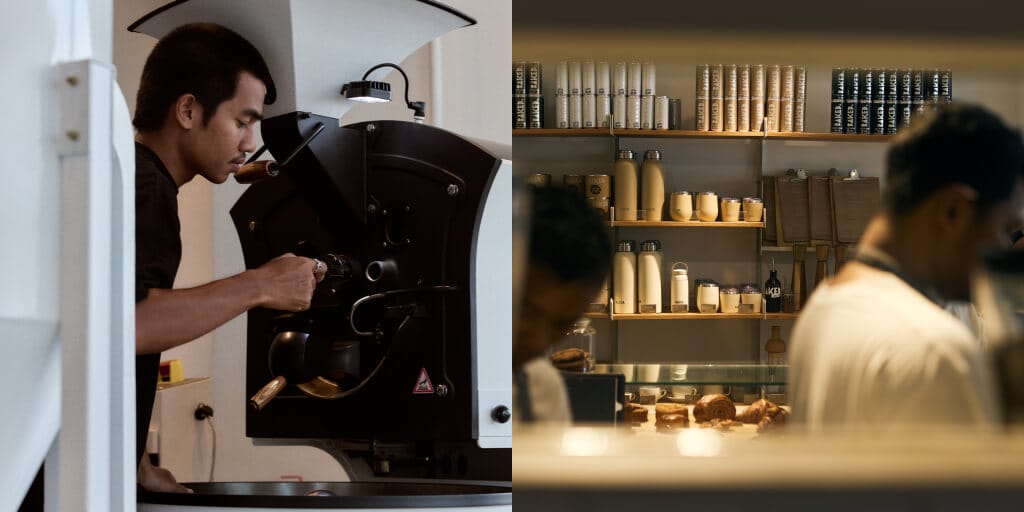With rising global inflation rates and ever-increasing retail prices, coffee consumers are more price-conscious than ever. The demand for value for money has been steadily creeping in, with customers expecting quality and consistency from all of their coffee shop visits.
At the same time, high staff turnover continues to impact specialty coffee shops and the broader hospitality industry. This ongoing issue has made it challenging to hire and retain skilled baristas, making it difficult to meet expectations for high standards.
An increasing number of cafés are leveraging automation to cope with these persisting issues. That said, it has become a vital tool for training and supporting baristas across various experience levels.
Yet automation remains a hotly debated topic in specialty coffee. Some fear that an overreliance on technology could compromise baristas’ skills, leading to a significant shift away from specialty coffee’s values.
I spoke with Daniel Gerlach, German coffee competitor and WMF Professional Coffee Machines brand ambassador, to explore how automation is reshaping barista culture and why balancing technology with craft is essential to stay true to the essence of specialty coffee.
You may also like our article on how automation improves barista workflow.
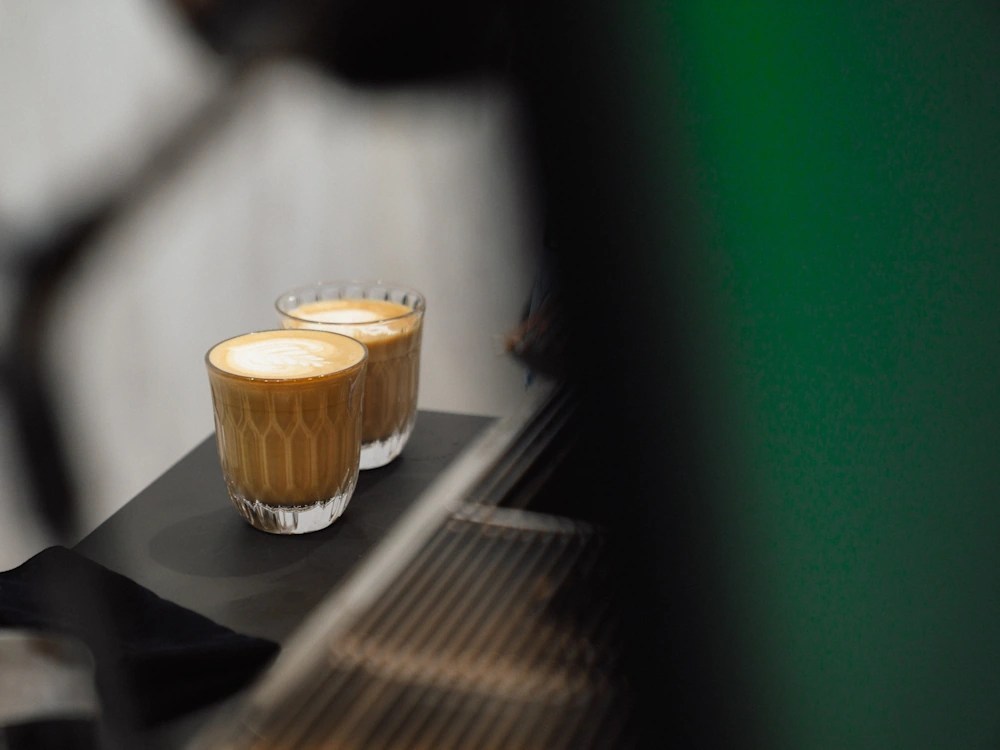
Coffee shops are facing an increasing number of challenges
The hospitality industry is notorious for high staff turnover and labour shortages. The US Bureau of Labor Statistics reports that the industry has the highest turnover rate in the country at over 70%. Another study found that nearly 3 million US hospitality workers left their jobs in early 2024 – 204% above the national average quit rate.
This issue also prevails worldwide. Recent data shows that, on average, 6% of UK hospitality workers quit every month.
Staff turnover has long been a challenge in the hospitality sector, partly due to pervading attitudes that job roles like baristas are merely “stop-gap” positions and not long-term career options.
This, combined with a lack of employer investment in training and support from employers, leads to limited career advancement opportunities and drives up staff turnover rates in coffee shops.
Many baristas also face financial instability, poor job benefits, taxing working conditions, and long hours, contributing to low retention.
The pandemic put an even more significant strain on both staff and operators when around 95% of coffee shops worldwide had to close in 2020. Many cafés had to reduce available working hours for baristas, naturally causing many to seek out other employment opportunities.
Those who remained often had to work long hours to compensate for short staffing, leading to burnout and lasting effects on their mental health even post-pandemic. For some, this was enough for them to leave the hospitality industry altogether.
Changing consumer expectations
Covid-19 spurred the increase in at-home coffee consumption, which presented a double-edged sword for the specialty coffee sector.
“Many consumers have taken a closer look at coffee, attended barista courses, and invested in high-quality machines,” says Daniel Gerlach. He’s a three-time German Latte Art Champion, co-founder of Seven Hills Coffee Roasters, and WMF Professional Coffee Machines brand ambassador.
While this helps elevate standards in the broader industry, bolstering its growth, it also means coffee shops have to invest heavily in staff training to keep up with rising consumer expectations of quality and service.
“In our coffee school, 80% of our students who are home baristas are even better trained than staff in some cafés,” Daniel adds. “Customers who make an excellent cappuccino at home every morning expect a higher level of quality when they visit a café.
“This makes it increasingly difficult to satisfy these customers and retain their loyalty, especially with frequently changing staff.”
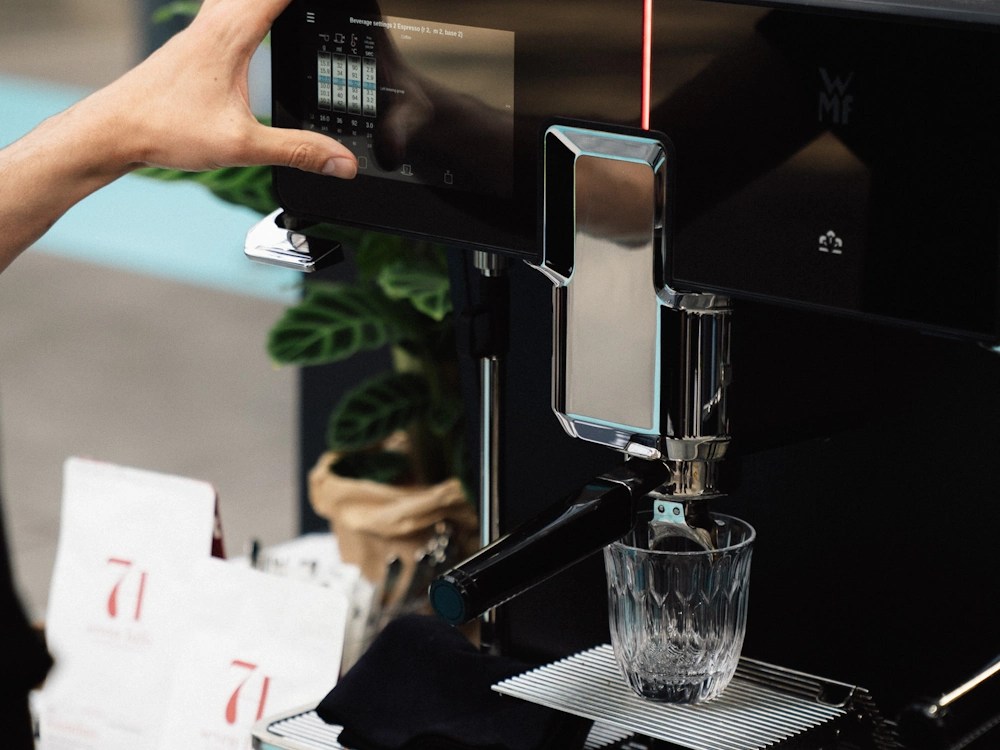
Automation has emerged as a solution to high staff turnover
Barista training has evolved significantly in recent decades, and we can attribute much of this advancement to technological innovation. Machines have become much more intuitive, allowing baristas to deepen their understanding of coffee extraction.
Daniel points out that today’s baristas enter the trade with a completely different level of coffee knowledge than he did in 2009.
“Whether you used 18 or 19g of coffee in the portafilter wasn’t so important,” he recalls. “We largely hoped that the espresso would run for between 20 and 30 seconds. If it still tasted good, then we had done everything right.”
Modern baristas have a far greater understanding of coffee because they’re taught technical skills in a more standardised way.
“My employees all work with scales. They calculate a brew ratio of one to two and measure the TDS level when dialling in every morning,” Daniel explains. “At our Seven Hills Café, new temporary staff are not allowed to make coffee for customers straight away. It’s important to learn how to use the machine step by step first.”
However, the reality is often different when cafés experience high staff turnover. Training new baristas to a high skill level is costly and time-consuming, which can negatively impact customer service and beverage quality until they’re fully confident using espresso machines.
In response, many operators are leaning on automation to manage training and reduce the steep learning curve often associated with the role.
The WMF espresso NEXT, for example, is a hybrid machine. It allows baristas to develop traditional skills while leveraging automated functions for support when needed.
“The appearance of the WMF espresso NEXT already suggests high coffee quality, as it looks like a portafilter machine,” Daniel says. “Yet it is as easy to use as a fully automatic coffee machine.
“Experienced baristas can use the hybrid machine mainly as a portafilter. Less skilled coffee professionals, meanwhile, can use it like a fully automatic machine. It tamps, levels, and extracts the espresso for you.”
The WMF espresso NEXT also has a built-in grinder, automatic extraction monitoring, and an AutoSteam function to simplify the entire brewing process. Less experienced baristas can use the fully automated features to produce consistently high-quality drinks that meet consumer demand.
Using coffee automation to fill the gap in barista experience level
Persistent staffing issues have left many coffee shops with significant gaps in barista skill levels. This can open the door to inconsistencies, mistakes, and lower-quality beverages, impacting customer loyalty and sales.
Automated technology can help bridge this gap, supporting baristas of all experience levels and retaining, rather than replacing, them as staff.
“Modern barista culture is embracing human touch – which is the most unstable factor in the coffee preparation process – while being supported by automation to improve consistency,” Daniel says. “I see this as a positive development, as it gives the barista more room to manoeuvre and focus more on different aspects of their job role.”
Both new and experienced baristas can use hybrid machines like the WMF espresso NEXT in different ways for better support.
Less experienced staff can rely on automated features – like the NEXT’s semi-automatic portafilters, AutoSteam technology, and integrated grinders – for extraction consistency while still building critical skills like dialling in espresso and pouring latte art.
Tenured baristas, meanwhile, can use the machine’s automated features to speed up service and focus more on engaging with customers.
Daniel notes that even the most skilled baristas have off days. Automation can compensate for this and maintain an efficient workflow.
“If I’m not 100% focused on the machine and can only give 80% of my attention that day, perhaps due to stress or my physical condition, I notice this immediately in the end product in the cup,” adds Daniel. “If the machine supports me in this, the product will also be much better.”
Additionally, Daniel says it can be challenging to maintain consistent quality even for highly skilled baristas, especially when factors like temperature and humidity fluctuate.
Automated espresso machines like the WMF NEXT make automatic adjustments that provide all baristas with greater consistency, quality, and control, even in these situations.
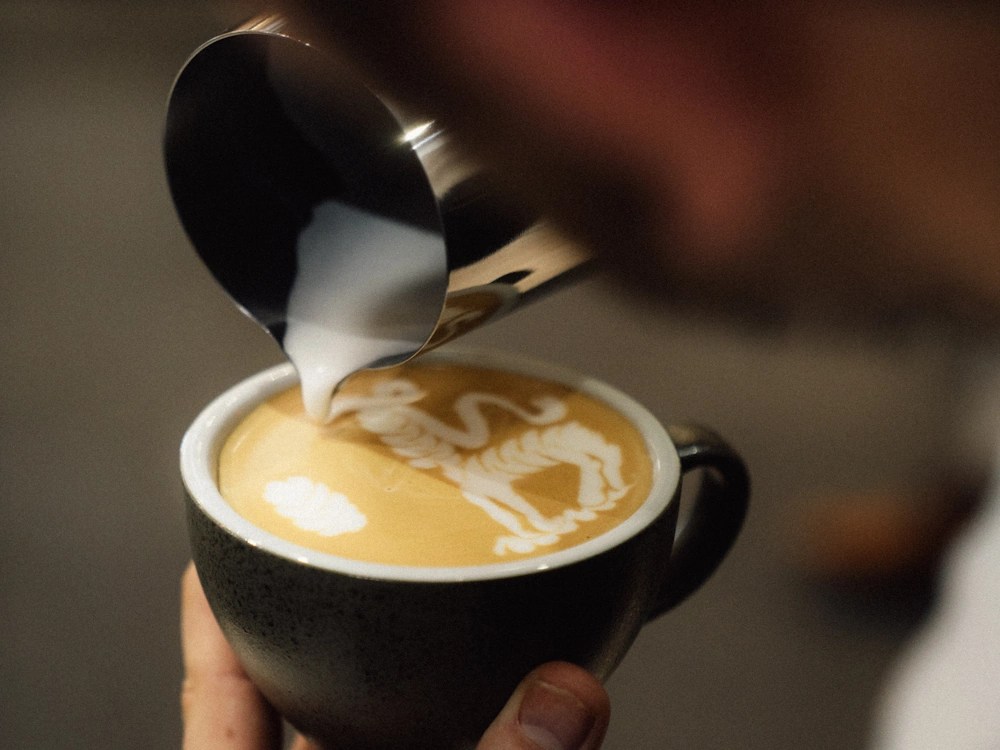
High expectations for automated technology
As automated technology becomes more prominent in the coffee industry, expectations for performance continue to rise.
Daniel says that, above all, automated features must be intuitive and easy to use.
“When you have to deal with a lot of modern technology, which is valuable and helpful, but you have to concentrate too much on how it works, you lose attention to the most important thing: making coffee.
“As a barista, I want to be able to influence all relevant factors easily. From steam pressure to temperature to grind size. Once set, these parameters should remain as stable and constant as possible.”
This aspect is especially crucial given the shortage of skilled workers who are less familiar with using traditional espresso machines. As baristas typically have to adjust extraction parameters manually, the process is subject to fluctuations that can cause excess coffee and milk waste or inconsistencies in extraction.
Therefore, automatic extraction monitoring has become a priority for baristas at all skill levels.
“It’s helpful if the machine monitors the extraction and grinder interaction and makes minor adjustments itself in the event of discrepancies, for example, adjusting the grind size when the dose needs to be changed,” Daniel says.
Milk dosing and steaming are also prone to human error, causing several issues.
“Sometimes more, sometimes less milk is poured into the jug, which leads to waste, and the quality of the milk foam varies depending on the quantity as well,” Daniel explains. “In the worst case, the jug overflows.”
He adds that using an automatic milk dispenser like with the WMF espresso NEXT ensures the correct amount is poured into the jug, leaving the barista to decide whether to froth it by hand or use the AutoSteam function.
Is coffee automation a threat to barista culture?
There’s been an ongoing debate about whether coffee automation threatens the skills of baristas and the craft of specialty coffee culture.
While concerns about automation have merit, there has been a renewed emphasis on craftsmanship in modern coffee machine technology.
“Fully automatic machine manufacturers are increasingly focusing on portafilters, while portafilter machines are becoming more and more similar to fully automatic machines thanks to the wide range of technical possibilities,” Daniel explains.
Opinions on automation have always been relatively divided, but Daniel says he has noticed a recent shift as more people see its benefits. He encourages coffee professionals to be more open to new technologies, especially as consumer expectations about quality continue to increase.
“This should be an incentive for us not just to keep up with but to help shape automation in coffee shops,” he says. “I’m convinced that automation will lead to an increase in coffee quality, even in locations where staff are inexperienced. Despite automation and technology playing greater roles in coffee shops, we don’t have to lose the human touch in coffee.
“I think we can appreciate the craftsmanship and still use a certain amount of technological support to make baristas’ lives easier,” Daniel says. “It’s like changing gears in a car; I love driving manually, but the further the journey, the more grateful I am for the support of an automatic gearbox.”
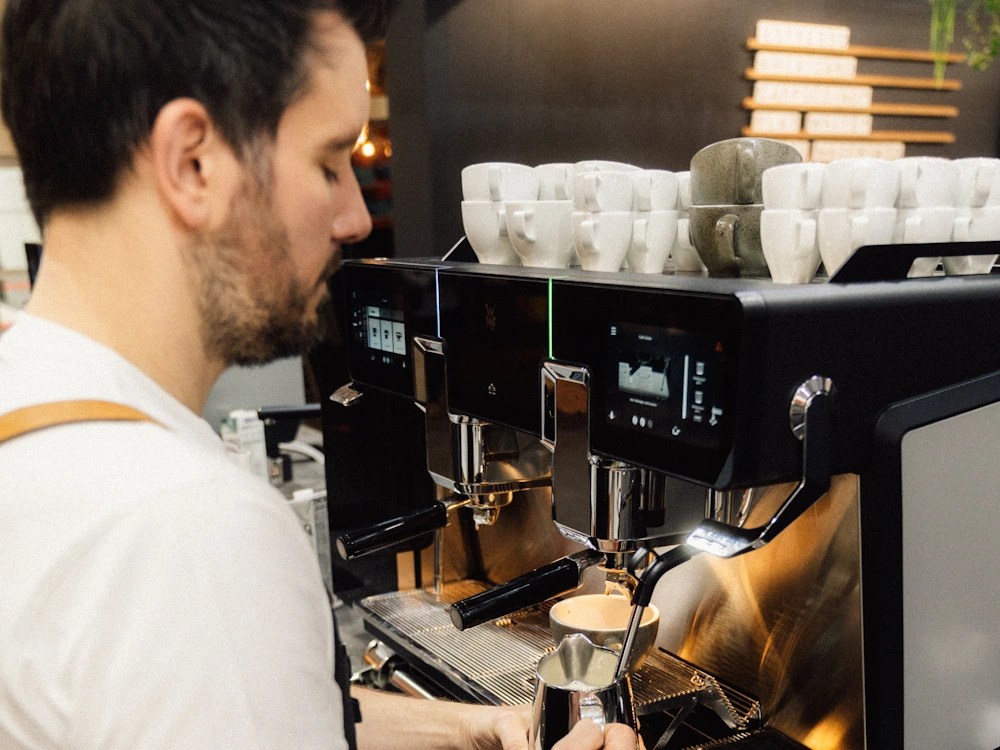
Staffing challenges in specialty coffee are persistent, so café operators must find more effective ways to manage new barista training while also supporting their existing staff.
As automation continues to advance, more coffee shops will rely on it to accomplish these tasks. These technologies will continue to reshape the barista role and how they prepare coffee, ideally for the better.
The topic of automation is controversial and will most likely remain that way for some time. However, today’s technology is striking a better balance, giving baristas the flexibility to use automated features when they need it without losing the art and craft of coffee.
Enjoyed this? Then read our article on what the future is for espresso machine technology.
Photo credits: WMF
Perfect Daily Grind
Please note: WMF is a sponsor of Perfect Daily Grind.
Want to read more articles like this? Sign up for our newsletter!
Escape from it all while still enjoying the comforts of home. Discover Expedia's array of vacation rental options—from cozy city apartments to picturesque beachfront villas.
Source link



